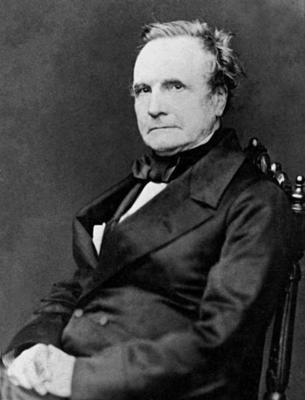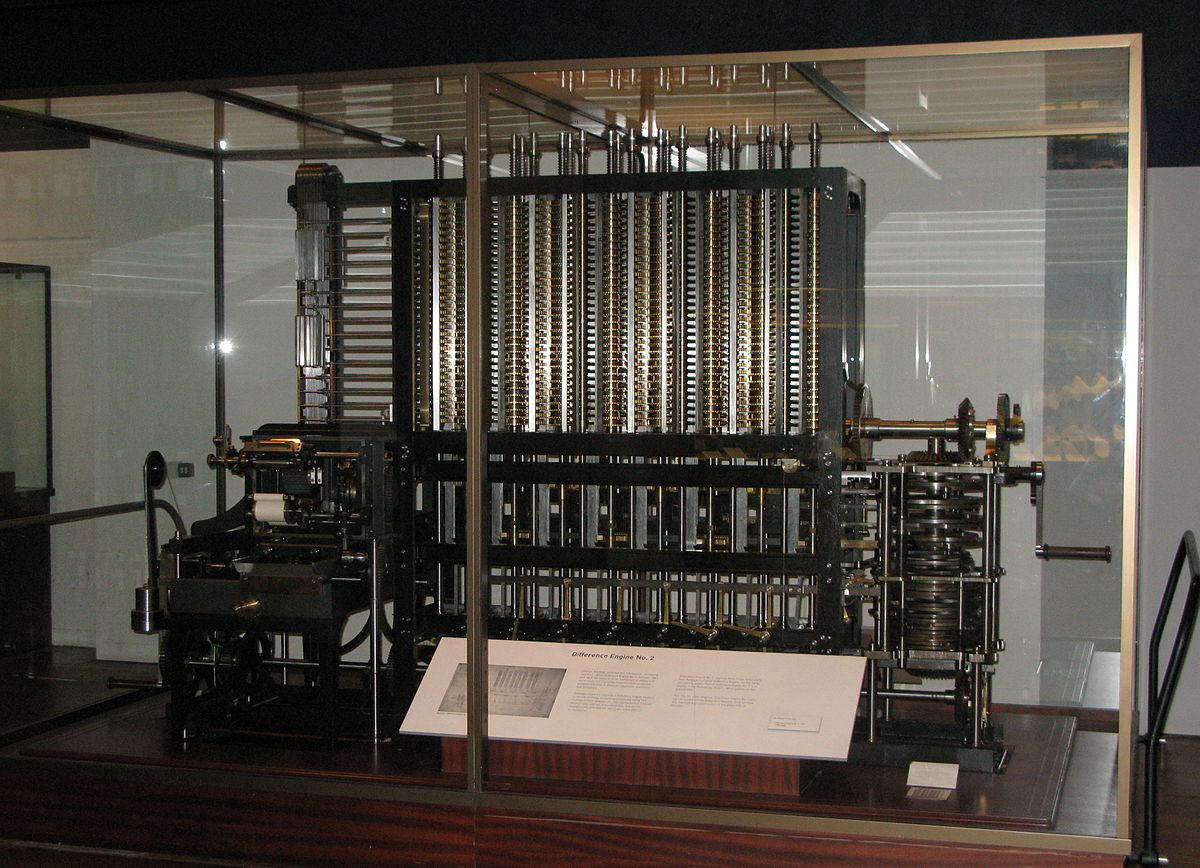Charles Babbage, mathematician and inventor of the world's first computer: 224th birthday

Charles Babbage in 1860,
224 years ago, on December 26, 1791, at 44 Crosby Row, Walworth Road , a boy was born in London who was named Charles. In total, the family of the banker Benjamin Babbage had four children.
Charles was ill a lot as a child, and at the age of eight he was even sent to study in a school in the countryside to recover his health after a severe fever that nearly interrupted his life. And after that, for health reasons, he often had to study at home with private teachers.
During his studies, Charles became seriously interested in mathematics. Entering the Holmwood Academy, he spent a lot of time reading books on mathematics in the local library, and at his request, his parents hired additional teachers to the institute's program to help him learn this science at home. One of the teachers pulled up Charles's education to a degree suitable for admission to Cambridge.
Entering Cambridge in October 1810, and having studied there a little, Charles was disappointed with the local level of teaching mathematics. Charles met other gifted students - George Peacock (in the future - a famous mathematician), John Herschel (in the future - a mathematician, astronomer, chemist, botanist, inventor and experimental photographer), and others.
Together they organized within the walls of the university the so-called An “analytic society”, the merits of which include, among other things, propaganda of Leibniz symbolism for working with differential equations. Prior to this, they jointly translated the textbook “The Scientific Foundations of Integral and Differential Calculus” by the French mathematician Sylvester Lacroix. Starting in the form of a comic student project, by the 1830s, the “Analytical Society” had already become an official unit of the university, and still exists there.
After Cambridge, Charles gave lectures, worked together with Herschel in scientific work related to electricity. He wrote books and tried to engage in politics. His book “The Economics of Mechanisms and Production”, dedicated to the organization of industrial production and published in 1832, had a fundamental influence on mathematical methods of operations research (development and application of methods for finding optimal solutions based on mathematical modeling, statistical modeling and various heuristic approaches). In particular, the principle of the division of labor was actively promoted in the book, and it was proved that this technique leads to an increase in production efficiency. Now this principle in Britain is called the "Babbage Principle."
In addition, Babbage was interested in engineering, in particular the work of trains. He invented the triangular device “snowstorm” or “track cleaner”, which is often called the “slaughterhouse” (by analogy with this you can recall the “kenguryatniks” of SUVs) - it helped to quickly clear railway tracks of foreign objects (and creatures). He also owns the development of a special dynamometer car that measures various critical parameters of the railway track.
He participated in the creation of the Astronomical community and in the creation of a single standard for astronomical calculations. It was the work on correcting errors in the counting tables that led Babbage to the idea of mechanizing routine work according to calculations.
Quote from a historical biography:
In 1812, he was sitting in one of his rooms, and looked at the logarithmic tables full of errors. And suddenly he came up with the idea of automatically calculating these numbers using machines. The French government has developed a new method of counting tables. 3-4 mathematicians solved the problems of counting, a dozen more broke up the work into simpler parts, and the routine work, which consisted of addition and multiplication, was left to the hands of 80 counting workers who did not understand anything more in mathematics than these two simple actions. Thus, mass production was first applied for mathematical purposes. Babbage was captured by the idea that the work of inexperienced accountants can be completely replaced by mechanisms that would work more reliably and faster.
The idea of the division of labor of calculators belonged to Gaspard de Prony, who led the French Census Bureau from 1790 to 1800.
In 1822, Babbage published an article describing a machine capable of replacing human calculators, and soon proceeded to its practical creation. As a mathematician, Babbage knew the method of approximating functions by polynomials and calculating finite differences. In order to automate this process, he began to design a machine, which was called - difference. This machine had to be able to calculate the values of polynomials to the sixth degree with an accuracy of the 18th character.
The following year, on the recommendation of the Royal Society, the British government allocated him £ 1,500 in subsidies to create a difference machine.
Unfortunately, the inventor was unable during his lifetime to build a fully working version of the machine conceived by him. Instead of three years, he spent more than 9 years on it, the budget for its creation grew 10 times, but he could not foresee all the difficulties associated with the implementation of his idea.
After the government refused to allocate additional funds to finance a failed project, Babbage turned to a more general version of a mechanical computer, an “analytical machine”, which he called “Difference Machine No. 2”.
After his death in the second half of the 19th century, other inventors according to his drawings managed to build working versions of difference machines, one of which was even used for its intended purpose, for calculating and publishing logarithmic tables.

One of the difference machines, built by another inventor based on Babbage's drawings.
Between 1989 and 1991, on the bicentenary of Charles Babbage's birthday, a working copy of the difference machine No. 2 was assembled on the basis of his original works in the London Museum of Science. In 2000, he earned money in the same museum a printer also invented by Babbage for his car. After eliminating the small design inaccuracies found in the old drawings, both designs worked flawlessly.

The difference machine built in our time according to the drawings of the inventor, located in the London Museum
The analytical machine invented by the inventor is a direct prototype of a modern digital computer. Babbage linked the arithmetic device (called the "mill"), the memory registers integrated into a single whole (the "warehouse"), and the input-output device implemented using three types of punched cards into a single logical scheme. Punch cards operations switched the machine between modes of addition, subtraction, division and multiplication. Punch cards of variables controlled the transfer of data from memory to the arithmetic device and vice versa. Numerical punch cards could be used both to enter data into the machine, and to save the results of calculations if there was not enough memory.
Another modern copy of the machine is in the Museum of Computer History in Mountain View in California:
While working on an analytical machine, Babbage corresponded with British mathematician Ada Lovelace . They met Babbage when she was only 17 years old. Subsequently, she not only gave him ideas on the design of the machine, but also developed an algorithm for her work to calculate the Bernoulli numbers . In this regard, she is often called the first programmer in history.
In 2011, British Babbage fans devised a plan to build the Analytical Engine fully in the way the author intended it. The initiative was called "Plan 28". So far, they have not been able to find several million pounds to finance their project, but they hope to complete it at least in 2021, on the 150th anniversary of the death of the inventor. Translated into modern units, such a machine will have 675 bytes of memory and operate at a frequency of 7 Hz.
For more than 40 years, Babbage has lived and worked at No. 1 Dorset Street in Marylebone North Westminster. He died there, at the age of 79, on October 18, 1871. Now at this address you can find a round memorial tablet with his name.
